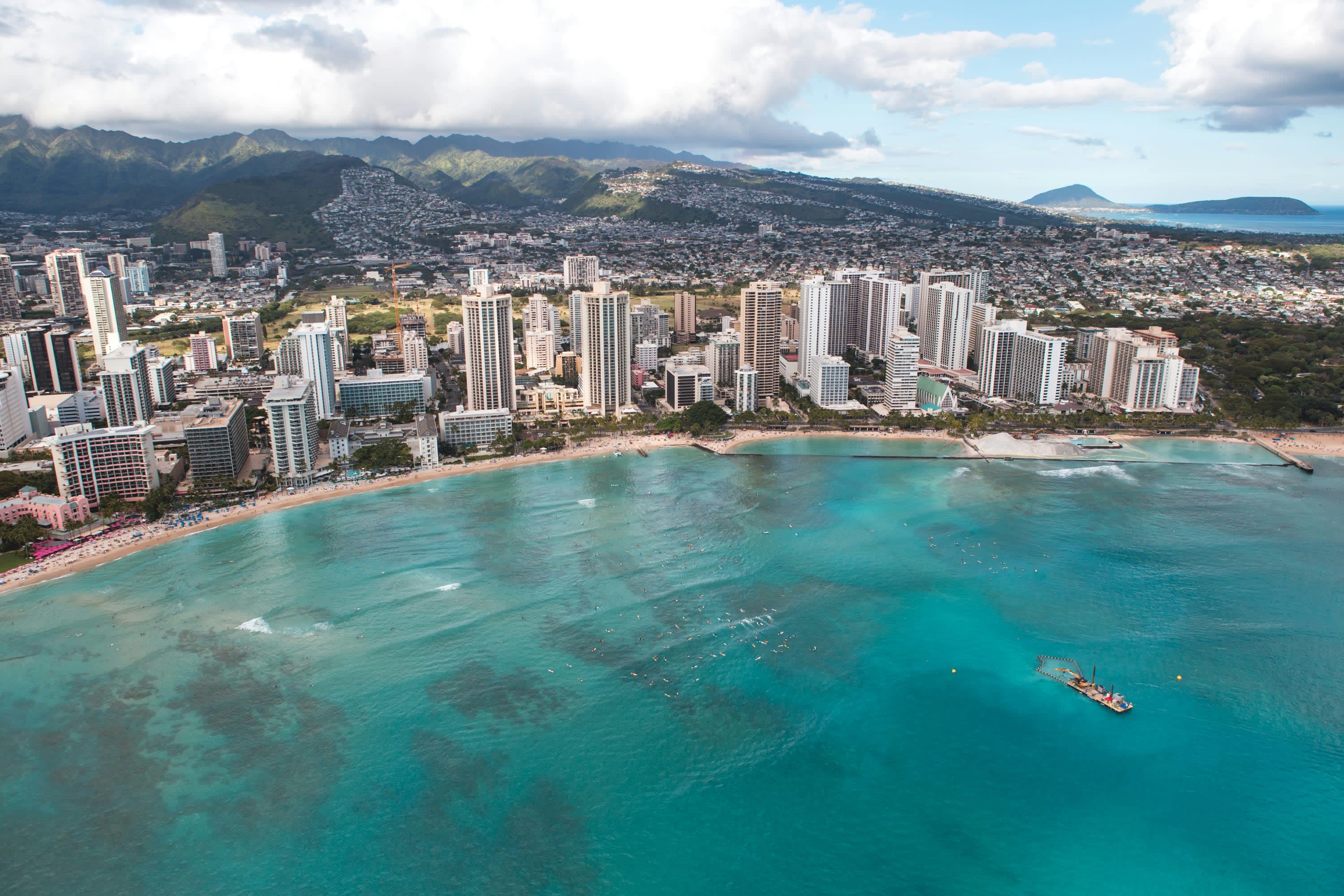
Hawai‘i comprises six major islands: Oahu, Maui, Kauai, the Big Island, Molokai and Lanai. From urban Honolulu on Oahu to the volcanoes of the Big Island, the calm beaches of Maui to the rugged jungles of Kauai, you’ll get a mixture of relaxation and adventure on each. But it can be hard to decipher which Hawai‘ian island to visit for your first time to the South Pacific US state.
“Each Hawai‘ian island has its own heartbeat — a unique vibe, landscape and rhythm that make each unforgettable,” Fora Advisor Caroline Weilert said, adding how each island “offers its own magic, making Hawai‘i endlessly intriguing for every type of traveler!”
This comprehensive guide breaks down all your options, with insights and tips from Fora travel advisors. Connect with a Fora Advisor directly to plan and book your idyllic Hawai‘i vacation. Not only can an advisor help you decide which island best aligns with your interests, whether it’s a relaxing vacation to Maui or a six-day adventure to the Big Island, but they can also unlock VIP hotel perks you can’t access elsewhere.
How to choose the best island to visit in Hawai‘i for first-time visitors
Hawai‘i is an incredible destination, and it’s easy to forget it’s part of the US.
“No passport needed, no language barrier and no foreign currency to manage!” Fora Advisor Sara Jeanne Gulley said.
But deciding which part of Hawai‘i to visit is much less clear, and the best places to visit in Hawai‘i are spread throughout the islands. You won’t be able to see everything in a single trip.
Before we break down each island, the following factors can help you make a decision.
Consider the duration of your trip
How many days you spend in Hawai‘i is an important factor. For example, spending time on Oahu is going to look differently from spending time on the Big Island. Oahu is condensed, while the Big Island’s attractions are fairly spread out. If you want city and beach, opt for Oahu. If you want to experience a couple different climate zones in a single trip, go to the Big Island.
Think about flight schedules and ease of travel
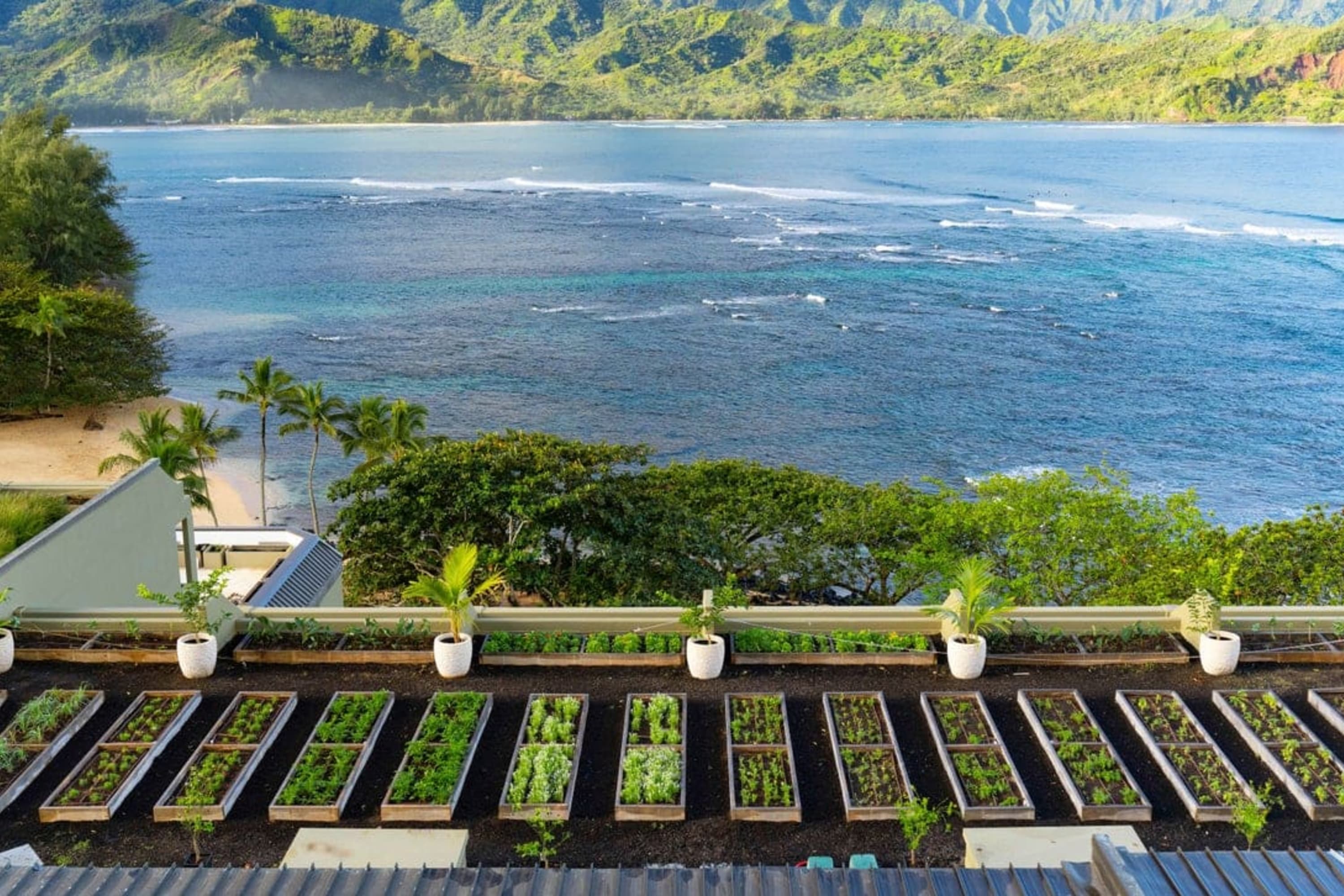
Image courtesy of 1 Hotel Hanalei Bay
Oahu is the only Hawai‘ian island with a major international airport; it’s the easiest to get to, which is one of the reasons it’s the best Hawai‘ian island for families to visit. In fact, flights to all the other islands usually go through Oahu first. This can eat into your total travel time (and make it harder on your kiddos, if you’re visiting with family). Our guide on how to travel between the Hawai‘ian islands offers more tips, but internal travel is something to consider if you’re looking for convenience.
Consider your desired activities and attractions: nightlife, beaches, parks, eateries, shops…
If it’s your first time to Hawai‘i, the island you visit depends on what you want to do. Oahu has something for everyone, including a bumping nightlife, amazing beaches and opportunities for cultural immersion. But if you prefer nothing but relaxation, you might consider a trip to Maui or Lanai instead (though both of these islands also offer adventure). Molokai, meanwhile, may be of greater appeal if you’re interested in immersing yourself in Hawai‘ian culture at its most authentic. The Big Island and Kauai are both great choices if you want adventure with a side of relaxation.
Consider your preferred accommodations
The best places to stay in Hawai'i range from beautiful beachside resorts to gorgeous hotels to intimate boutique gems. While all the islands have resorts and smaller hotels, your choice of island will determine your options. Oahu has the widest selection of accommodations, but the Big Island, Maui and, to a lesser extent, Kauai, are better known for their massive (and often award-winning) resorts. If you prefer one style over the other, it may determine which island makes sense to visit.
As always, a Fora Advisor can help you narrow down your choices. Just reach out to get started.
Oahu
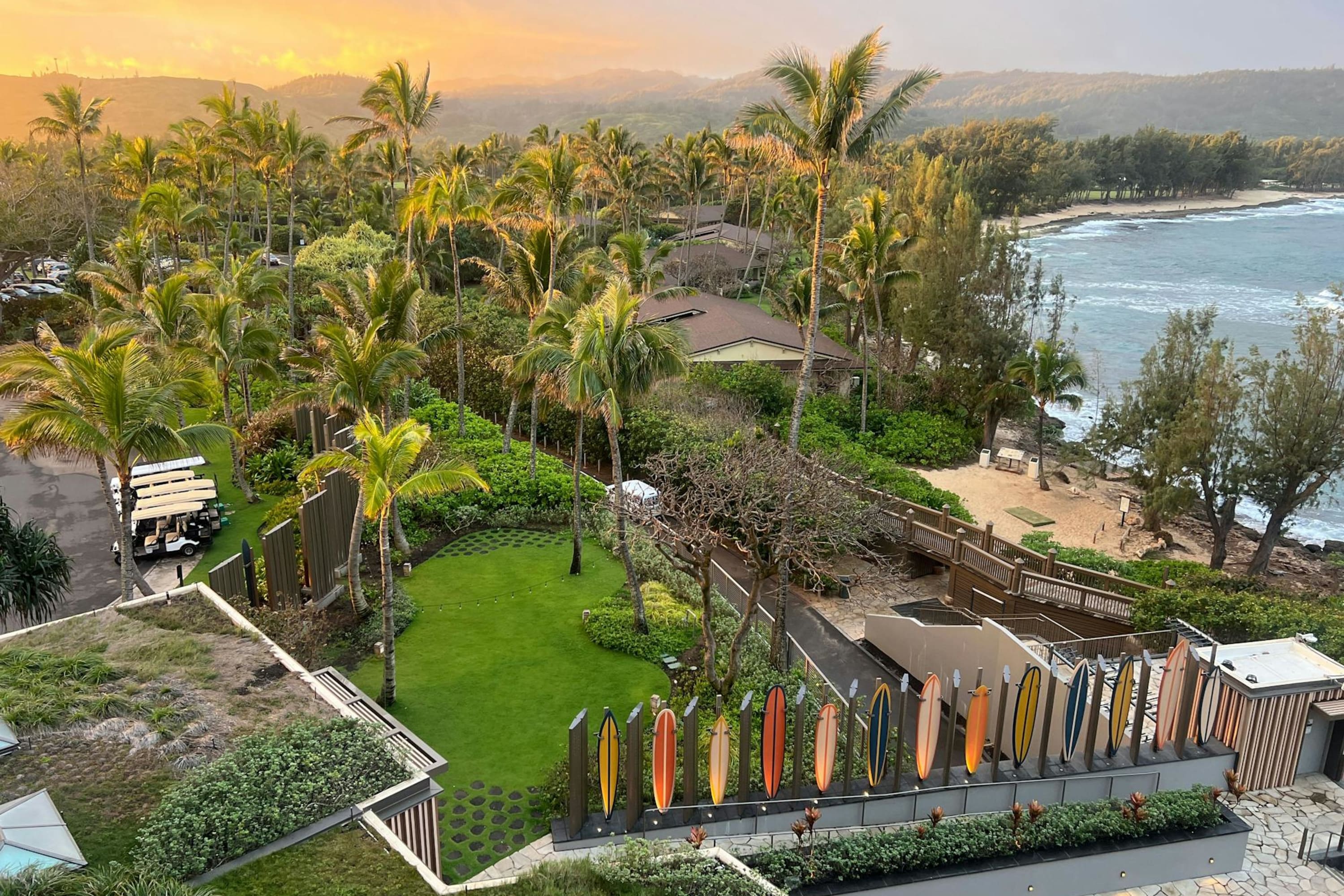
Image courtesy of Fora Advisor Lisa Roah
Oahu is bucket-list-worthy, in part, because there’s so much to do. Think of it as the sampler island. You can get a bit of culture, relax on the beaches and party in Waikiki… Oahu offers a taste of everything that makes a trip to Hawai‘i so amazing.
“If you want a lively city feel with beautiful beaches and some of the comforts of home, Oahu is the best option,” Fora Advisor Amy LaGrow-Rodgers said. “Famous Waikiki beach offers the beautiful beach vibe just steps away from bustling city streets [of Honolulu], so you get the best of both worlds.”
Related guides: First Timer's Guide to Oahu and An Insider's Guide to Honolulu
Oahu’s beaches cater to different tastes
“Oahu offers the perfect blend of city excitement and North Shore tranquility,” Fora Advisor Caroline Weilert said. “Spend a few days in Waikiki, enjoying top-notch restaurants, bustling farmers' markets, luxury shopping and the longest sandy beach in the islands.”
Then head to the North Shore for a nature moment. The beaches around Honolulu and Waikiki are lively, with plenty to do. Oahu’s North Shore beaches are more untouched and rugged, with because of the rougher surf.
Fora Advisor Chirag Panchal recommends families visit Oahu’s Ko Olina area for families.
“It’s a quieter side of the island with calm lagoons, perfect for young children to safely enjoy the water,” he said. He noted that the area offers a variety of resorts, including the family-friendly Disney Aulani Resort and the luxurious Four Seasons.
Related guide: Fora Advisor Holly Lacombe's Guide to Explore Beyond Waikiki on Oahu
Oahu is arguably the best island for shopping
Honolulu on Oahu is Hawai‘i’s only major metropolitan city. While you can find boutiques, upscale retailers and more casual shops across all the Hawai‘ian islands, nowhere else compares to Honolulu’s breadth of offerings. The best shopping areas include Ala Moana Center, the largest open-air mall in the world, Waikiki’s Luxury Row and Kalakaua Avenue, which feature high-end retailers, Hawai‘ian-inspired boutiques and souvenir shops.
Fora Advisor Winnie Harwell recommended shopping locally, highlighting the KCC Farmers Market and Aloha Stadium Swap Meet, for unique finds and souvenirs.
Oahu has a vibrant international food scene
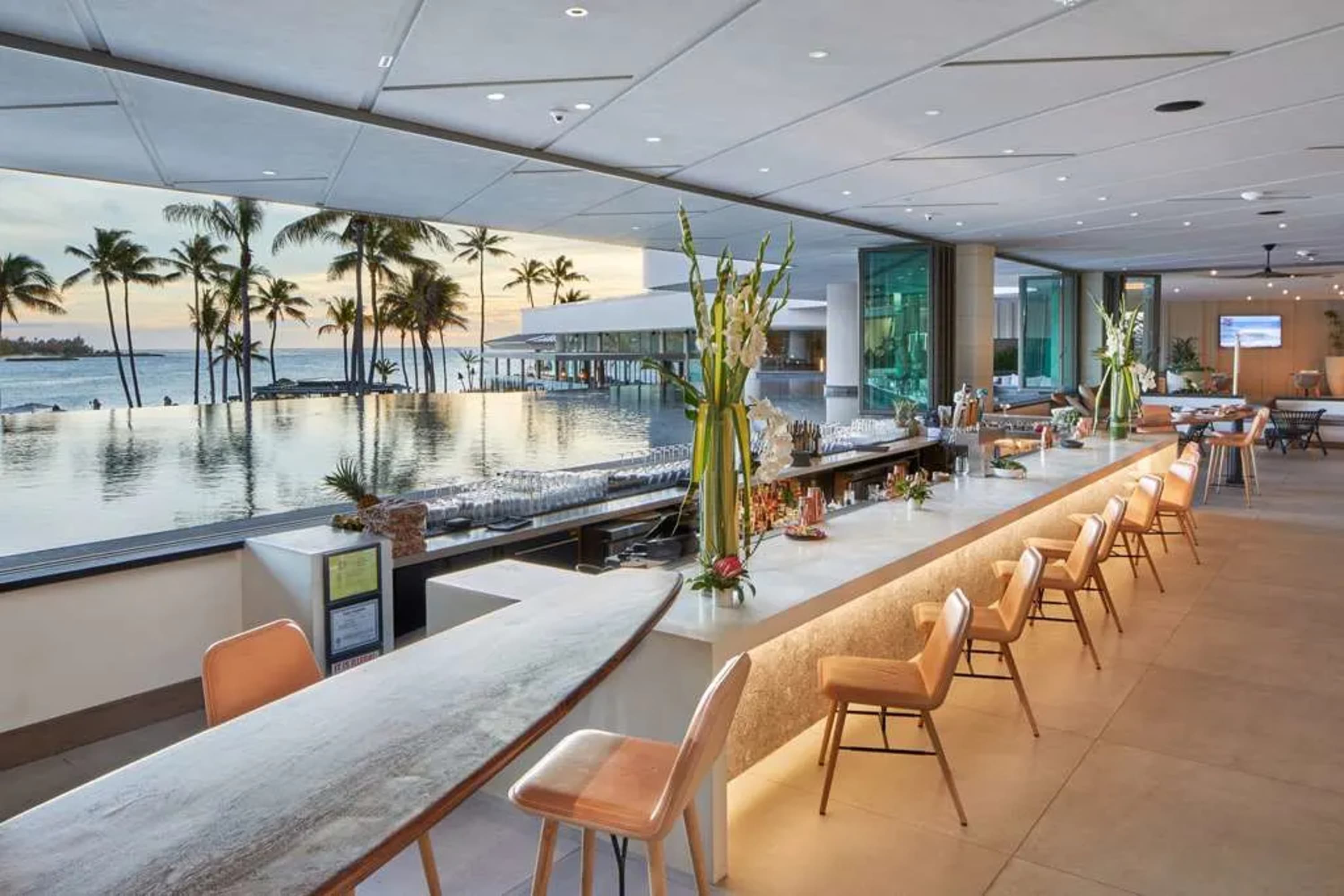
Image courtesy of The Ritz-Carlton O‘ahu, Turtle Bay
Oahu is a foodie’s paradise, and one of the main places in Hawai‘i where you can find a lineup of both international — especially Asian — and local cuisine. Honolulu hosts the most variety, and as you venture away from the urban areas you’ll find a greater variety of authentic Hawaiian flavors.
Fora Advisor Kristen Kellogg described Oahu as her favorite island for food, especially in the city: “I love sending my clients on custom food tours or to a Hawai‘ian cooking class,” she said.
“Head to the Northern part of the island for authentic experiences and local flavor,” Fora Advisor Sara Jeanne Gulley added.
She recommends leaving the comfort of your resort to sample food from Oahu’s famous food trucks. Her favorites include the Famous Kahuku Shrimp Truck (which had the “biggest and most delicious coconut shrimp I've ever tasted!”) and Ry's Poke Shack for amazing, fresh and authentic ahi tuna bowls.
Related guides: A Guide to the Best Places to Eat in Oahu and Best Restaurants Oahu: Beyond Honolulu
The island has many landmarks and historical sites
Beyond Waikiki Beach and Honolulu’s shopping, there’s Pearl Harbor and the Battleship Missouri Memorial, Diamond Head’s cultural activities, a variety of museums and more. Fora Advisor Katie McAvoy recommends visiting Iolani Palace, noting how it’s the only official royal residence in the United States.
Related guide: Local's Guide to the Best of Oahu, Hawaii
Oahu is the easiest Hawai‘ian to navigate without a car
Oahu is the easiest Hawai‘ian island to navigate for first-timers. While all the major islands have functional and efficient highway systems, none are as extensive as Oahu’s.
If you’re only visiting a resort (on any of the islands) with little or no intention to leave, transportation networks won’t apply to you. But if you’re the type of traveler who loves to explore, you don’t necessarily need to rent a car on Oahu. The island has a robust public transportation system, TheBus, which travels to popular spots like Pearl Harbor, Diamond Head and even the North Shore. For areas beyond the bus routes, ride-sharing services and bike rentals are readily available. You can, of course, rent a car on Oahu if you prefer the freedom to explore at your own pace; a Fora Advisor can arrange this for you.
Where to stay on Oahu: The Ritz-Carlton O‘ahu, Turtle Bay and ESPACIO Jewel of Waikiki
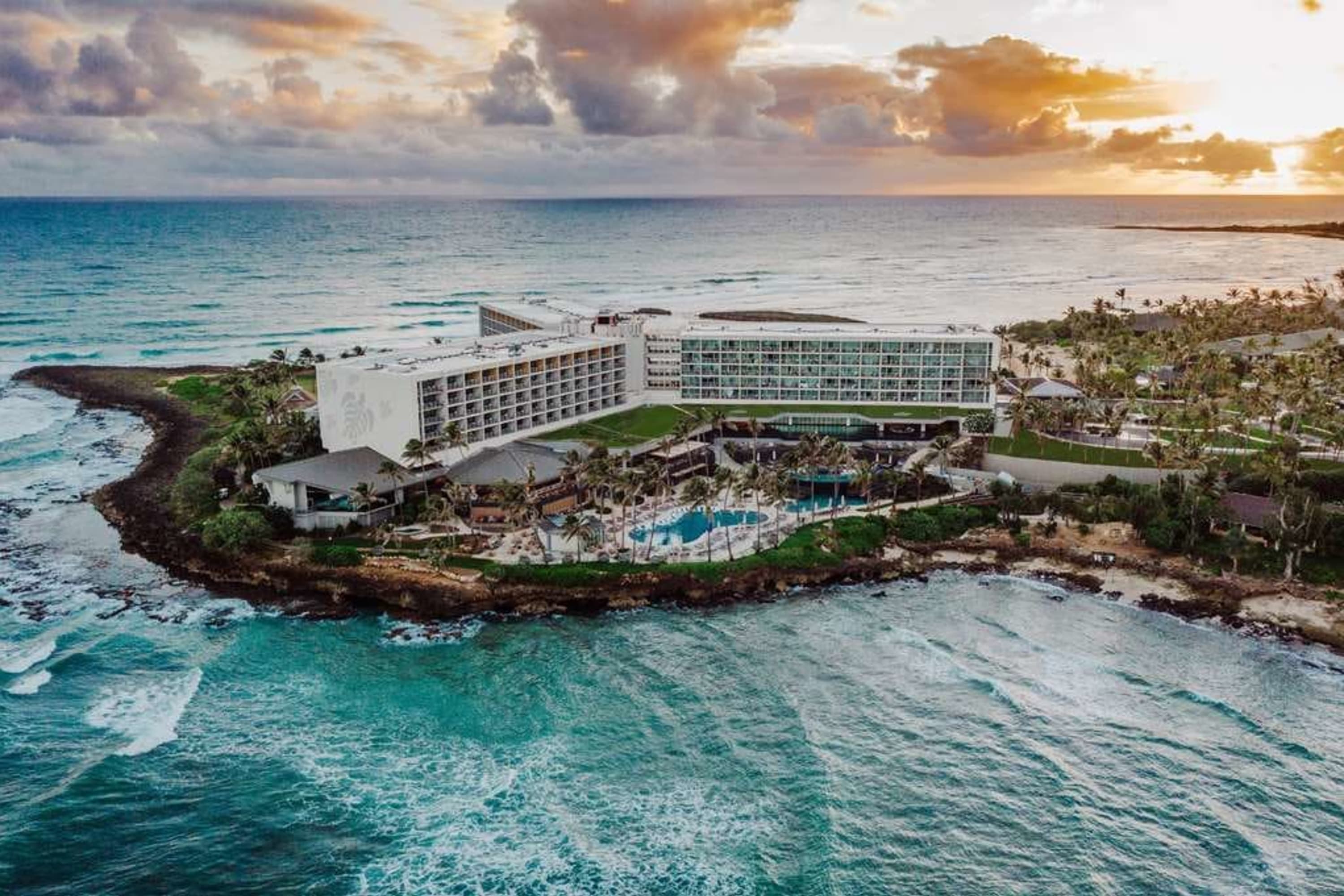
Image courtesy of The Ritz-Carlton O‘ahu, Turtle Bay
With options comes affordability — and luxury. All the islands feature world-class resorts, but Oahu offers a wide range of approachably priced, mid-tier and luxe resorts split between the north and south shores. The former offers large, laid-back and semi-secluded resorts; the latter — where you’ll find Honolulu and Waikiki — tends toward urban and beachfront hotels. Stay on the North Shore if you want privacy and the “resort experience.” Choose the South Shore if you prefer urban access and city vibes.
Fora Advisor Winnie Harwell highlighted Waikiki as a convenient base that offers plenty of hotel and dining options. You can easily take day trips to anywhere on the island.
The Ritz-Carlton O‘ahu, Turtle Bay is Fora’s top-booked property across Hawai‘i. This North Shore resort is a laid-back, oceanfront escape with beautiful beaches, golf courses and access to famous surf spots.
“The Ritz-Carlton O‘ahu, Turtle Bay is the kind of place where you go to ‘experience’ Hawai‘i,” Fora Advisor Maggie Moran said. “This is the land of laid-back surfer culture, and to me, the best traveler is one who wants to be active.”
Maggie added that the resort offers an impressive range of activities and experiences on property, from night snorkeling to horseback riding to lessons at a world-class surf school. Fora Advisor Kristen Kellogg added that the property also features a lei-making class and helicopter rides.
Fora Advisor Sara Jeanne Gulley also praised Turtle Bay: “This place is magical,” she said. “It feels like an intimate getaway at the edge of the earth.”
The South Shore’s ESPACIO The Jewel of Waikiki, a Fora Reserve partner, is an ultra-luxe boutique resort with only nine elegant suites. Each spans an entire floor, with two to three bedrooms, personalized butler service, private saunas and infinity pools.
Related article: What’s the Best Area to Stay in Oahu?
Fora perks at The Ritz-Carlton O‘ahu, Turtle Bay:
$100 hotel / resort credit, breakfast daily, complimentary air and concierge services, an upgrade and extended check-in/out whenever possible.
Fora perks at ESPACIO The Jewel of Waikiki:
$100 hotel / resort credit, breakfast daily, an upgrade and extended check-in/out whenever possible.
Related guide: Fora Advisor Nancy McLaughlin's Guide to Oahu Beaches & Hotels Guide
Maui
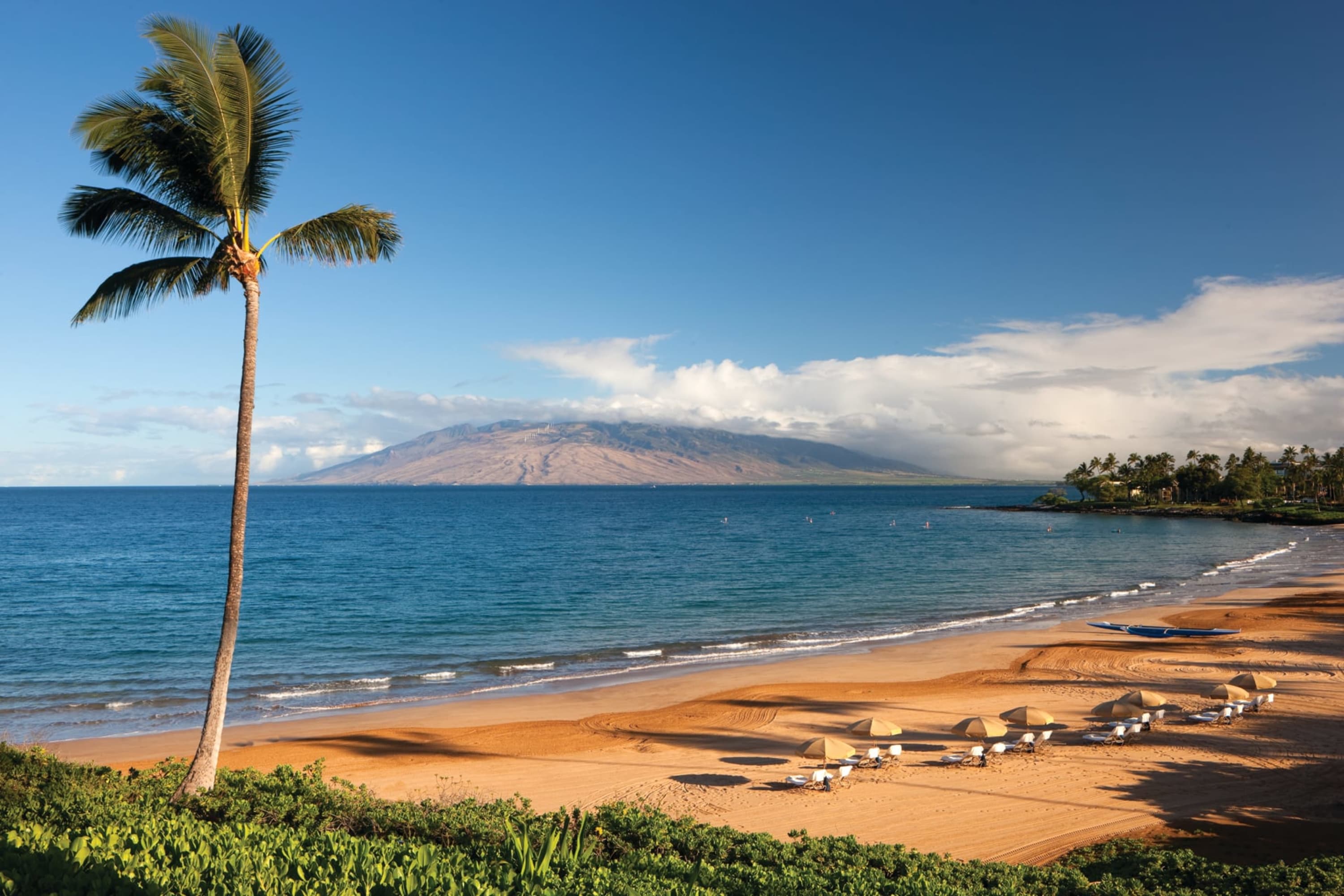
Image courtesy of Four Seasons Resort Maui at Wailea
Maui is a world-class destination for natural beauty, relaxation and a dash of adventure. Stunning beaches like Ka’anapali and Wailea are ideal for sunbathing, swimming and snorkeling. The famous Road to Hana — a scenic drive with waterfalls, lush rainforests and charming stops along the way — satisfies the urge for laid-back exploration. Nature-lovers must not miss Haleakalā National Park in particular, where sunrise hikes reward you with views above the clouds.
“Maui is where endless white beaches meet vibrant island energy, making it a perfect starter island for first-time visitors,” Fora Advisor Caroline Weilert said.
Related guides: Maui Magic: The Ultimate Guide to Paradise and A Relaxing and Adventurous Vacation to Maui
Relaxation is front and center on Maui’s beaches and resorts, but adventure is around every corner
Many resorts in areas like Wailea and Kapalua feature beachfront views, excellent accommodations and elite spas. Maui beaches, such as Napili Bay and Baldwin Beach, offer soft sands and calm waters. And lush landscapes, including bamboo forests and waterfalls, invite you to slow down and immerse yourself in the island’s nature and bohemian vibes. That said, Maui does not lack adventure.
“Maui is magic: There is so much natural wonder to explore, both above and below the water,” Fora Advisor Katie McAvoy said. “Maui can be as chill or adventurous as you like.”
Among her recommended things to do in Maui: swim in waterfalls, watch the sunrise and sunset above the clouds, snorkel in crystal-clear water right off the beach, play in the waves, explore and swim in tide pools. Fora Advisor Carlie Lee urges snorkeling enthusiasts to embark on a tour to Molokini crater. Carlie also listed a few popular snorkeling spots worth checking out, including Honolua Bay, Maluaka Beach and Ahihi-Kinau Natural Area Reserve.
Related guides: Adventurous Getaway to Maui, Hawaiʻi and Maui and Its Striking Spectrum of Landscapes and Experiences
Where to stay on Maui: Four Seasons Resort Maui at Wailea

Image courtesy of Four Seasons Resort Maui at Wailea
Four Seasons and Andaz are both among the most unique places to stay in Maui (and both are among our top-booked resorts in Hawaiʻi).
“I recently had clients celebrating a babymoon there, and the resort truly made their stay exceptional,” Fora Advisor Chirag Panchal said of the Four Seasons. “From the breathtaking views from their room to the personalized baby-friendly welcome gifts, the attention to detail was impeccable.”
Chirag said that the property’s incredible resort grounds and consistently attentive staff make it one of his favorite resorts to recommend, especially for anyone looking for a refined experience.
Fora Advisor Nadia Bess had several pro tips for enhancing your stay at Four Seasons Resort Maui. First, she recommended Hawaiian Stars Evening, which recounts the history of Polynesian wayfinders who used the stars, wind and currents to journey to the Hawai‘ian Islands. Nadia also noted that the property doesn’t charge extra for cabana, nor does it charge resort fees, which can add up to thousands of dollars in value over the course of a week. And if you’re looking for a two-island experience, Nadia recommends taking the ferry from Maui to Lanai. Four Seasons has a second property on the latter island, where you can enjoy more of the brand’s impeccable service in an entirely new setting.
Fora Perks at Four Seasons Resort Maui at Wailea:
When you book Four Seasons through Fora, you will enjoy exclusive Four Seasons Preferred Partner benefits. Your advisor will be pleased to give you more details.
Maui has many more resort options. As always, a Fora Advisor can help you decide where to stay.
Kauai
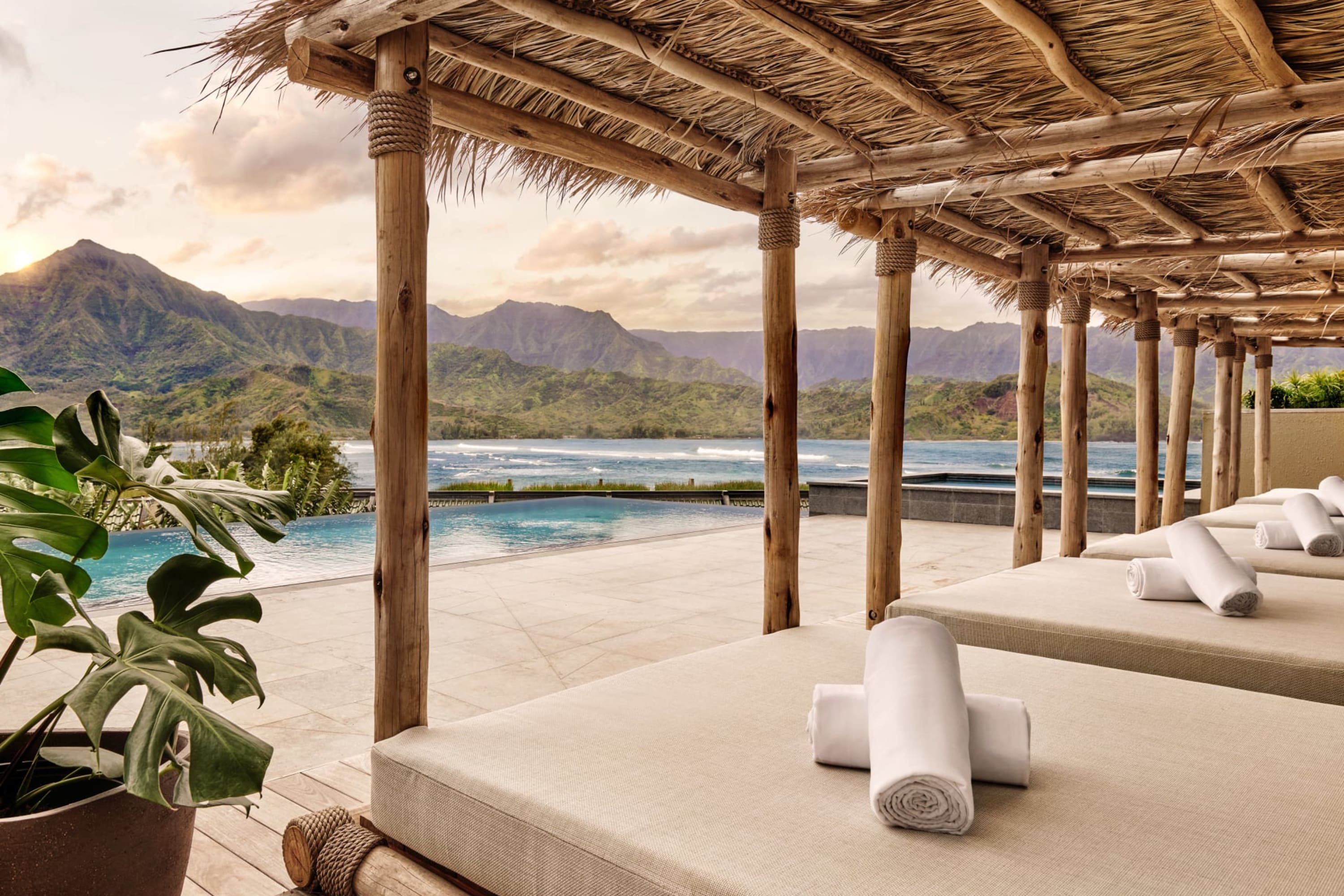
Image courtesy of 1 Hotel Hanalei Bay
The “Garden Isle” is a fantastic choice for first-time visitors to Hawai‘i who are drawn to lush landscapes and laid-back vibes. The island’s natural beauty is near unparalleled, with highlights like the stunning Na Pali Coast, Waimea Canyon and countless waterfalls and beaches that showcase the island's rugged wilderness.
“Kauai is Hawai‘i’s emerald paradise, where rainbows, waterfalls and rugged coastlines create nature’s masterpiece,” Fora Advisor Caroline Weilert said. “Known for its lush, untouched beauty, Kauai offers everything from thrilling hikes to adrenaline-filled helicopter tours, making it perfect for adventurers and nature-lovers alike.”
Related guides: Eat, Hike & Explore Natural Beauty on Kauai and Family-Friendly Adventure Spring Break in Kauai
Kauai’s unspoiled wilderness is ripe for adventure
Between Nāpali Coast State Wilderness Park, Wailua River State Park and half a dozen other nature reserves, there’s plenty of adventure and excitement on Kauai. Hiking, snorkeling, watersports and more are at your fingertips. If you want to hike the along the Nāpali Coast, just be sure to get a permit at least 30 days in advance, Fora Advisor Elizabeth Kaczka said.
“For the best experience, I recommend splitting your stay between the South Shore (Poipu) and the North Shore (Princeville/Hanalei),” Fora Advisor Carlie Lee said. “You'll get to experience both great beaches and the lush, green rainforest.”
Related guide: Beauty and Adventure in Kauai
Where to stay on Kauai: 1 Hotel Hanalei Bay
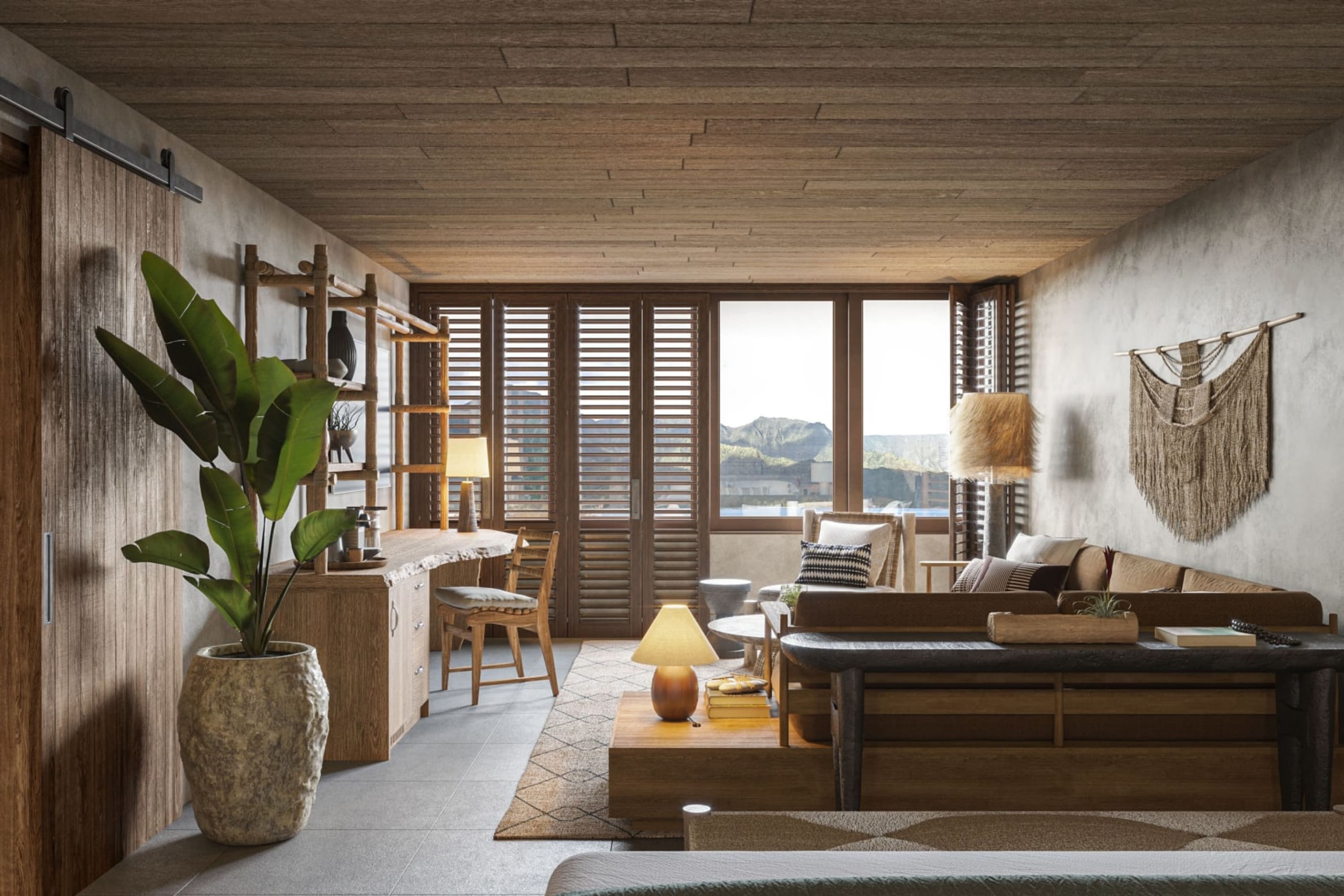
Image courtesy of 1 Hotel Hanalei Bay
1 Hotel Hanalei Bay, on the North Shore, is a luxe resort with an eco-chic aesthetic and a commitment to sustainability. Set on a cliff overlooking Hanalei Bay, the hotel offers views of the Pacific Ocean and the surrounding verdant mountains. The resort, a Fora Reserve partner and one of Fora’s top-booked properties in Hawai‘i, incorporates natural, reclaimed materials into its design and emphasizes environmental stewardship.
“Your arrival at the resort is an experience in itself,” Fora Advisor Hannah Taylor said. “They pair you with a front desk agent and welcome you with a refreshment. Since it was our honeymoon, we were greeted with a lovely coconut cake and a bottle of Champagne.”
You can also enjoy wellness-focused amenities, such as a holistic spa, fitness center and farm-to-table dining experiences. At the pool bar, get the BBQ chicken pizza, Hannah advised.
Fora Advisor Elizabeth Kaczka loves the hotel’s “awe-inspiring views” of Hanalei Bay. Its location also puts you near overlooks some of Kauai's most coveted attractions, like the Nāpali Coast and Princeville golf courses, making it an “ideal base for exploring the island's wonders or simply unwinding in paradise.”
1 Hotel Hanalei Bay also features two world-class spas: Bamford Wellness Spa, “where Hawaiian plant medicine and rituals using nature's healing elements bring true transformation,”Fora Advisor Anna Dobrenski said, and Vitality Kauai, a med-spa with a variety of nature-sourced holistic treatments and programs.
Fora Perks at 1 Hotel Hanalei Bay:
$100 hotel / resort credit, breakfast daily, an upgrade and extended check-in/out whenever possible.
Related guides: Fora Advisor Hannah Taylor’s Kauai Guide for Couples and Site Inspection at 1 Hotel Hanalei Bay Kauai
Big Island
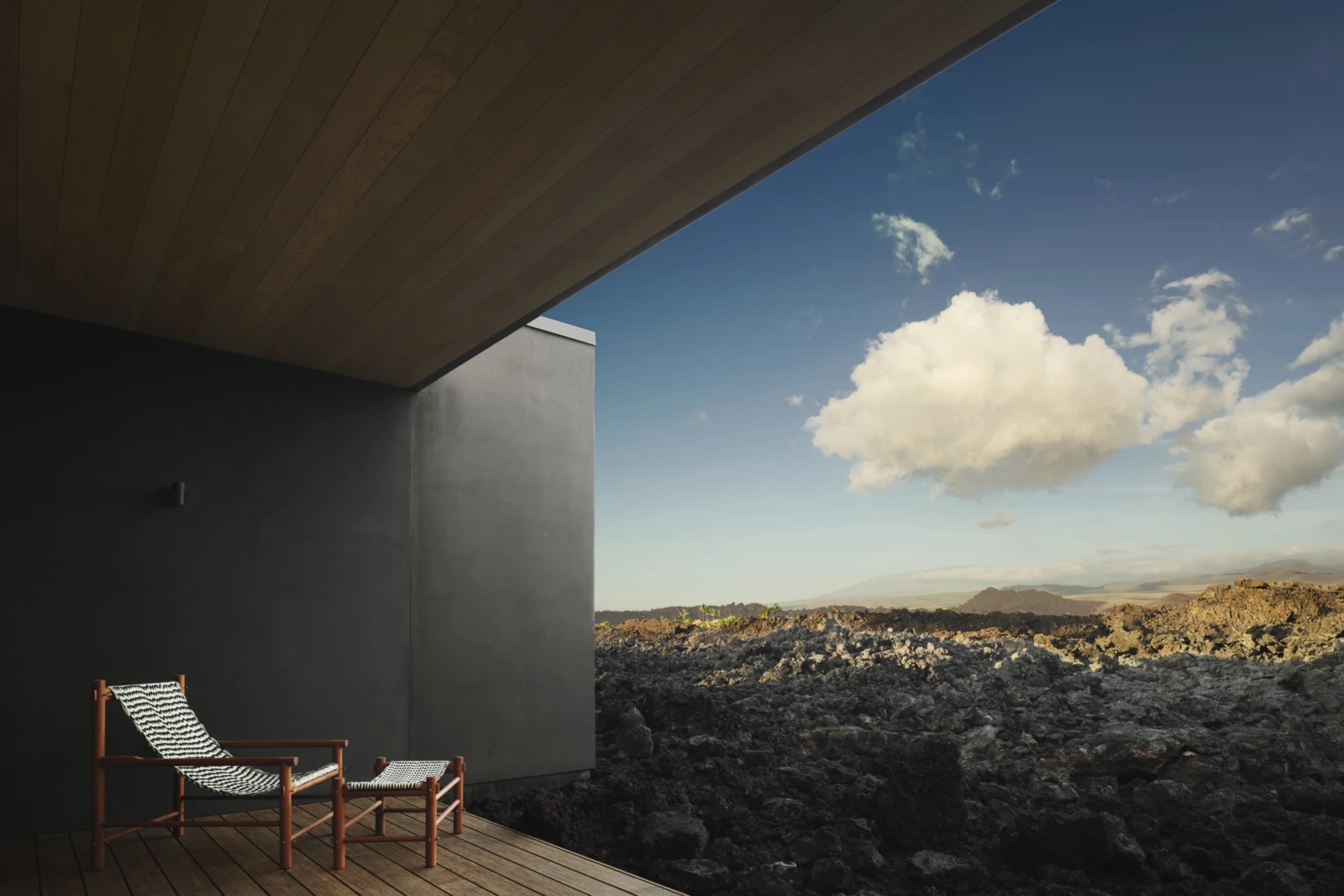
Image courtesy of Rosewood Kona Village
The Big Island, also known as Hawai‘i Island, makes its case as the best island to visit in Hawai‘i for first-timers in large part thanks to its diverse and dramatic landscapes, natural attractions and cultural experiences. You can witness active lava flows at Hawai‘i Volcanoes National Park, which also features ancient lava tubes, craters and steam vents. The Big Island’s wide-ranging ecosystems include rainforests, black- and green-sand beaches and even snowy peaks atop Mauna Kea. Also experience Hawai‘ian history and traditions by visiting historic sites like Puʻuhonua o Hōnaunau National Historical Park. Local festivals and hula shows are a regular occurrence, too.
Related guides: Easy Going on Hawaii's Big Island and The Island of the Aloha Spirit: The Big Island of Hawai'i
Outdoorsy adventure — and volcanoes — are a big part of the Big Island’s draw for first-time visitors
“The Big Island is a world of contrasts, where lush green oases emerge from ancient lava fields,” Fora Advisor Caroline Weilert said. “Driving through the vast fields of lava rock feels like stepping onto another planet — until you suddenly come upon vibrant green landscapes that seem to defy the rugged terrain.”
There aren’t many places around the world where you can safely trek through volcanic landscapes — and even fewer that offer jungles and beaches just around the corner. The Big Island satisfies an itch for adventure in unusual landscapes. For a more laid-back experience, Fora Advisor Kaitlynn Schryer recommends unwinding on Hapuna Beach or exploring Akaka Falls’ calming pools.
Culture is a big part of the Big Island
One of the Big Island’s most significant cultural sites is Puʻuhonua o Hōnaunau National Historical Park, once a place of refuge for ancient Hawai‘ians. Explore traditional structures, sacred temples (heiau) and learn about ancient local practices. Kaloko-Honokōhau National Historical Park is another important site, with petroglyphs, ancient fishponds and lava-rock trails that give insight into the resourceful lives of early Hawaiʻians. Cultural festivals and events abound. Attend the annual Merrie Monarch Festival, in Hilo, which commemorates King David Kalākaua (a.k.a. the “Merrie Monarch”).
Rent a car to explore everything the Big Island has to offer
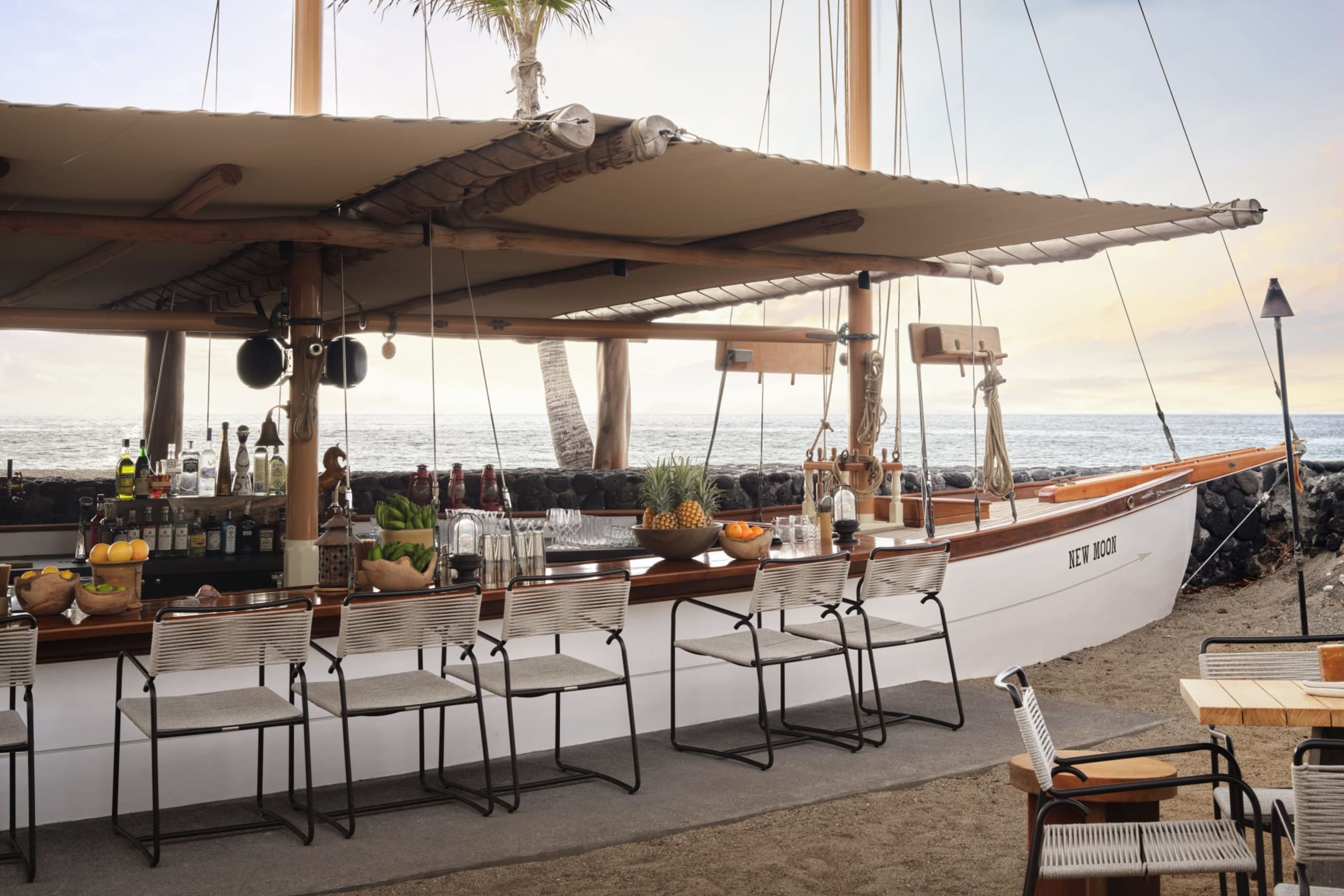
Image courtesy of Rosewood Kona Village
We recommend renting a car if you’re interested in venturing beyond your Big Island accommodations. Public transportation is sparse outside of the major settlements, but roads will take you anywhere you want to go — and at your own pace.
“Having a car lets you explore hidden beaches, scenic lookouts and off-the-beaten-path spots that aren’t accessible by public transportation, allowing for a complete Hawai‘i Island experience,” Kaitlynn said.
Local farms, farmers' markets and craft fairs throughout the island showcase Hawai‘ian produce — like coffee — as well as traditional crafts like weaved lauhala weaving, wood-carving and lei-making.
Related guide: Hidden Gems of the Big Island of Hawaiʻi
The Big Island is among the best islands for first-timers interested in authentic local cuisine
The Big Island’s gastronomic scene isn’t as diverse as Oahu’s, but there are few better places to explore every aspect of Hawai‘ian cuisine in particular. Between high-end resorts that provide an elevated take on traditional dishes and casual, authentic eateries around the island, the Big Island delivers on Hawai‘ian food.
Related guides: Dining on the Big Island: Restaurants to Visit and Foodie's Guide to Luxury on Hawai’i's Kohala Coast
Where to stay on the Big Island: Mauna Lani and Rosewood Kona Village
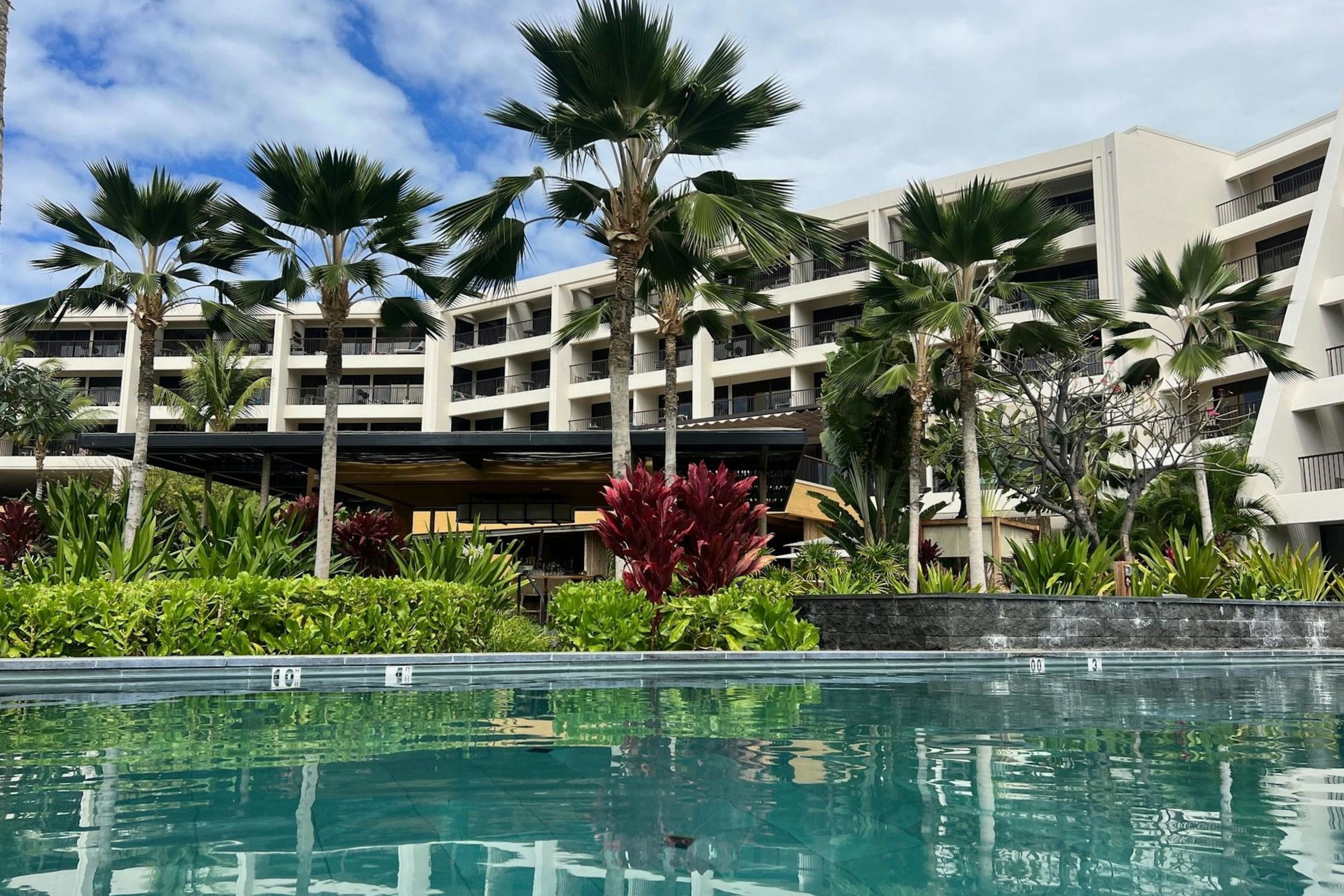
Image courtesy Fora Advisor Lisa Roah
A Fora Advisor can help you choose where to stay on the Big Island, but two properties that stand out are Mauna Lani and Rosewood’s Kona Village. The Kohala Coast’s Mauna Lani resort emphasizes cultural connections and natural beauty. The resort has beautifully designed rooms and bungalows with ocean and mountain views, and is surrounded by ancient fishponds, lava fields and white-sand beaches. Mauna Lani hosts a variety of cultural programs, such as lei-making, storytelling and the resort’s signature canoeing experience, where local historians take you around the Kohala Coast. Mauna Lani is also home to the Kainalu Sports program, which offers guided activities like outrigger canoeing, paddleboarding and snorkeling. The resort’s on-site restaurants showcase locally sourced ingredients and Hawai‘ian culinary traditions.
“The sunset canoe experience and dinner at CanoeHouse are not to be missed!” Fora Advisor Kristyne Wada said, noting that the resort is both a personal favorite and beloved by her clients.
Kona Village, one of the first Michelin Key hotels in the US, is on the Big Island’s rugged Kona Coast. Hale-style bungalows are designed to honor the site’s history and culture, and organically blend into the natural surroundings. This is a place to enjoy a digital detox. There are no TVs or telephones; the resort encourages you to find a deeper connection with nature. Kona Village features a network of lava-rock paths and historic petroglyphs. There’s also a spa located in a dormant lava field, plus immersive cultural programs, including hula lessons, traditional Hawai‘ian crafts and storytelling sessions with local experts. You can also take part in water-based activities, like snorkeling, paddleboarding and canoeing.
“Kona Village is barefoot luxury at its finest,” Fora Advisor Kara Kasuba said. “It feels like you have stepped into a dream of old Hawai‘i.”
Fora Perks at Mauna Lani, Auberge Resorts Collection:
$100 hotel / resort credit, breakfast daily, an upgrade and extended check-in/out whenever possible.
Fora Perks at Kona Village, A Rosewood Resort:
Welcome amenity, breakfast daily and upgrade whenever possible.
Related guide: The Best Places to Stay in the Big Island
Molokai and Lanai
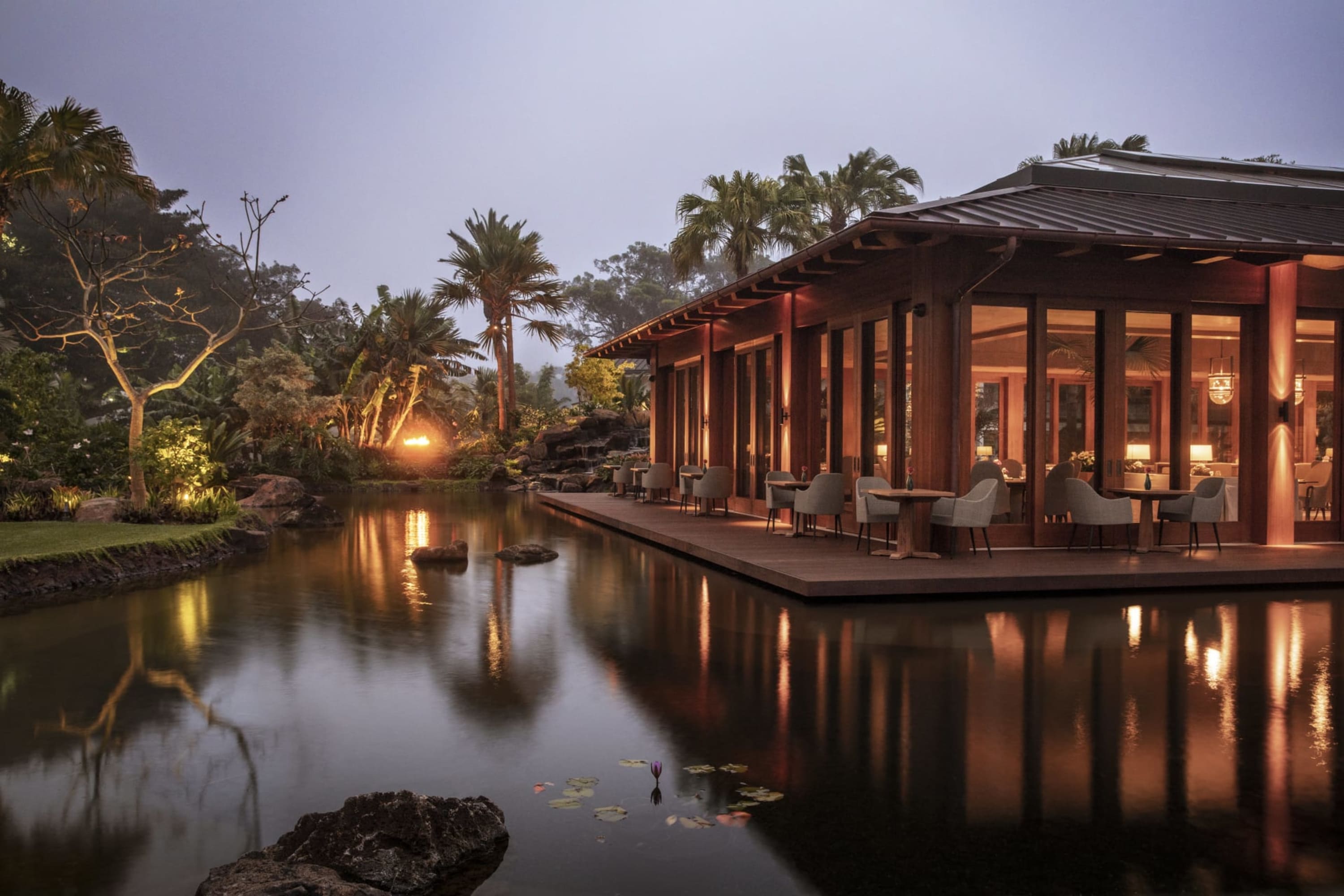
Image courtesy of Sensei Lanai, A Four Seasons Resort
Molokai and Lanai are unique options worth considering for your first time in Hawai‘i. Molokai is known as the “Friendly Isle” and offers an untouched, traditional Hawai‘ian atmosphere, with a deep-rooted sense of community and culture. Visitors to Molokai can explore the scenic Halawa Valley, one of Hawai‘i’s oldest settlements, visit the historic Kalaupapa National Historical Park or relax on uncrowded beaches.
Lanai is a small island with both high-end resorts and off-the-beaten-path experiences. It’s sometimes called the “Pineapple Island” for its history as a Dole plantation. You can explore interesting landscapes like the lunar-like rock formations of Garden of the Gods, snorkel at the secluded Hulopoe Bay or relax at one of the island’s exclusive resorts.
Fora Advisor Tracy Burpee described Lanai as somewhere you can maintain privacy or engage in activities at a resort beach club. She added there’s an adorable village on the island with great poke bowls and traditional Hawai‘ian breakfasts, best enjoyed with locals.
Related guides: Luxury Stays in Lanaʻi, The Most Exclusive Island in Hawaiʻi and Discover Hawai'i's Quietest Island: Lanai
Where to stay on Lanai: Sensei Lanai, A Four Seasons Resort
Sensei Lanai is a Japanese-inspired wellness retreat that provides a luxurious escape from the hassles of everyday life. This adults-only resort specializes in personalized programs, including yoga, meditation, spa treatments and fitness consultations guided by wellness experts. The property is surrounded by tropical vegetation and foothills, creating a sense of seclusion on an island already (semi) removed from civilization. Tracy noted that if you rent a jeep for sightseeing, you may even catch a glimpse of whales offshore.
Fora Perks at Sensei Lanai, A Four Seasons Resort:
When you book Four Seasons through Fora, you will enjoy exclusive Four Seasons Preferred Partner benefits. Your advisor will be pleased to give you more details.
You don’t have to limit your trip to one Hawai‘ian Island
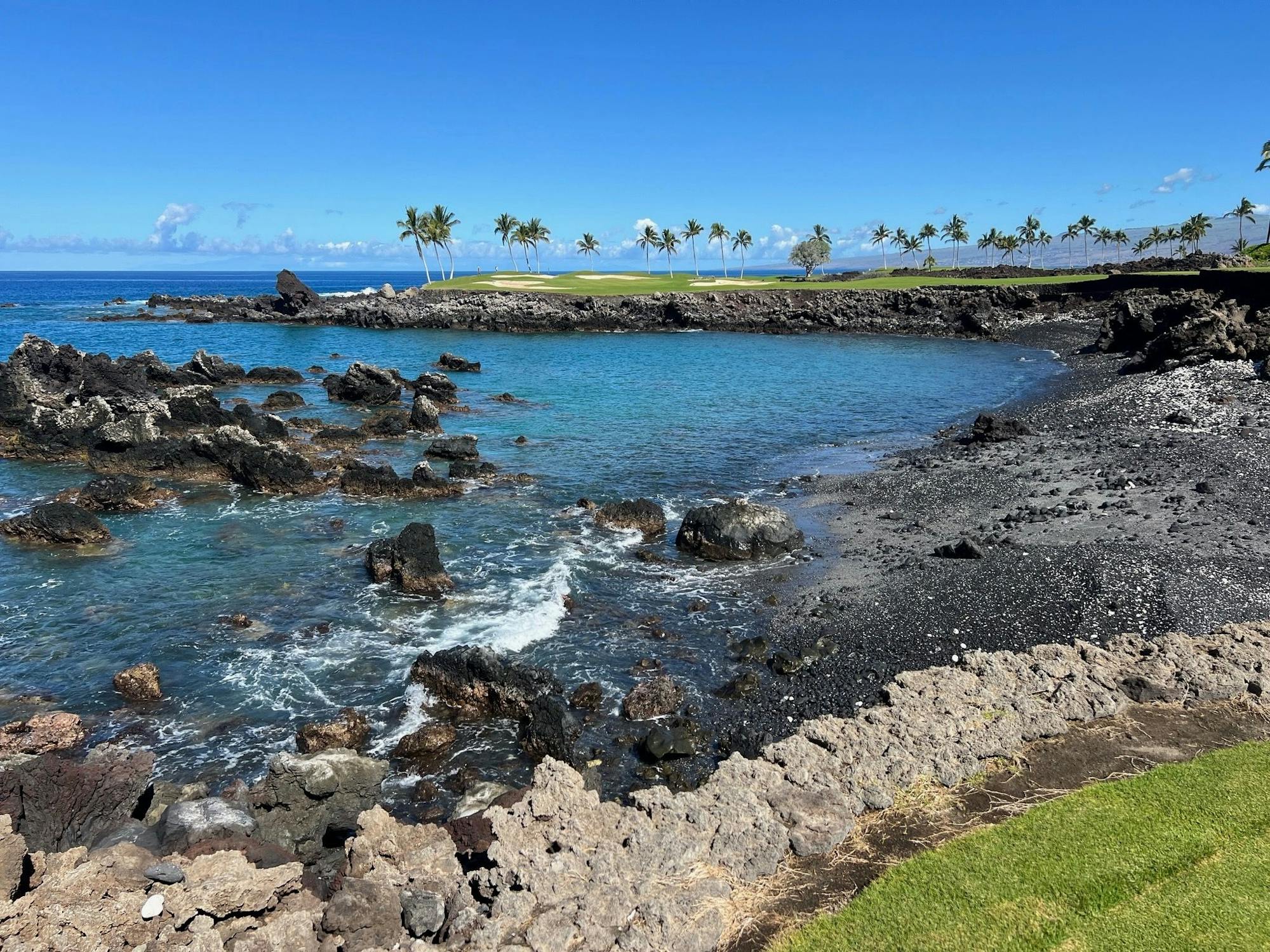
Image courtesy of Fora Advisor Lisa Roah
Unless you only have a few days, there’s no reason you can’t visit multiple Hawai‘ian islands. They’re well connected by water and domestic flights, with mostly short travel times, and it’s fun to see how the islands differ from one another. Fora Advisor Amy LaGrow-Rogers noted that if you have at least 10–14 days, you can easily visit two or more islands without feeling rushed.
“I love the combination of Oahu for a few days with Maui for your first visit to Hawai‘i,” Fora Advisor Katie McAvoy offered as an example. She added that you can experience Honlulu’s rich history and exciting urban attractions, try surfing in Waikiki and then move on to Maui to unwind at a resort.
Many Hawai‘i cruises allow you to visit multiple islands
A cruise will let you visit all or several Hawai‘ian islands. Some options depart from Hawai‘i itself, usually Oahu, and require a flight from the mainland. But others depart from California or Asia, with a long voyage on the open ocean first.
Plan your first time in Hawai‘i with a Fora Advisor
Ultimately, your first Hawai‘ian island to visit depends on your interests and preferences. Oahu is the easiest island to visit and has the widest appeal, but Maui, the Big Island and Kauai each have plenty to offer. There are no wrong answers, and you can always return (you’ll want to).
A Fora Advisor can help you decide which island to visit for your first time and help you plan your vacation. They’ll break down all your options so you can make an informed decision. And they’ll unlock complimentary hotel perks to enhance your visit. If you also need help planning an itinerary, your advisor can offer expert suggestions, arrange things like rental cars or private transfers and help if anything goes awry. Connect with a Fora Advisor to get started.
The best island to visit in Hawai‘i for first timers: FAQs
Read on for answers to questions about visiting Hawai‘i for your first time.
How many days do you need in Hawai‘i?
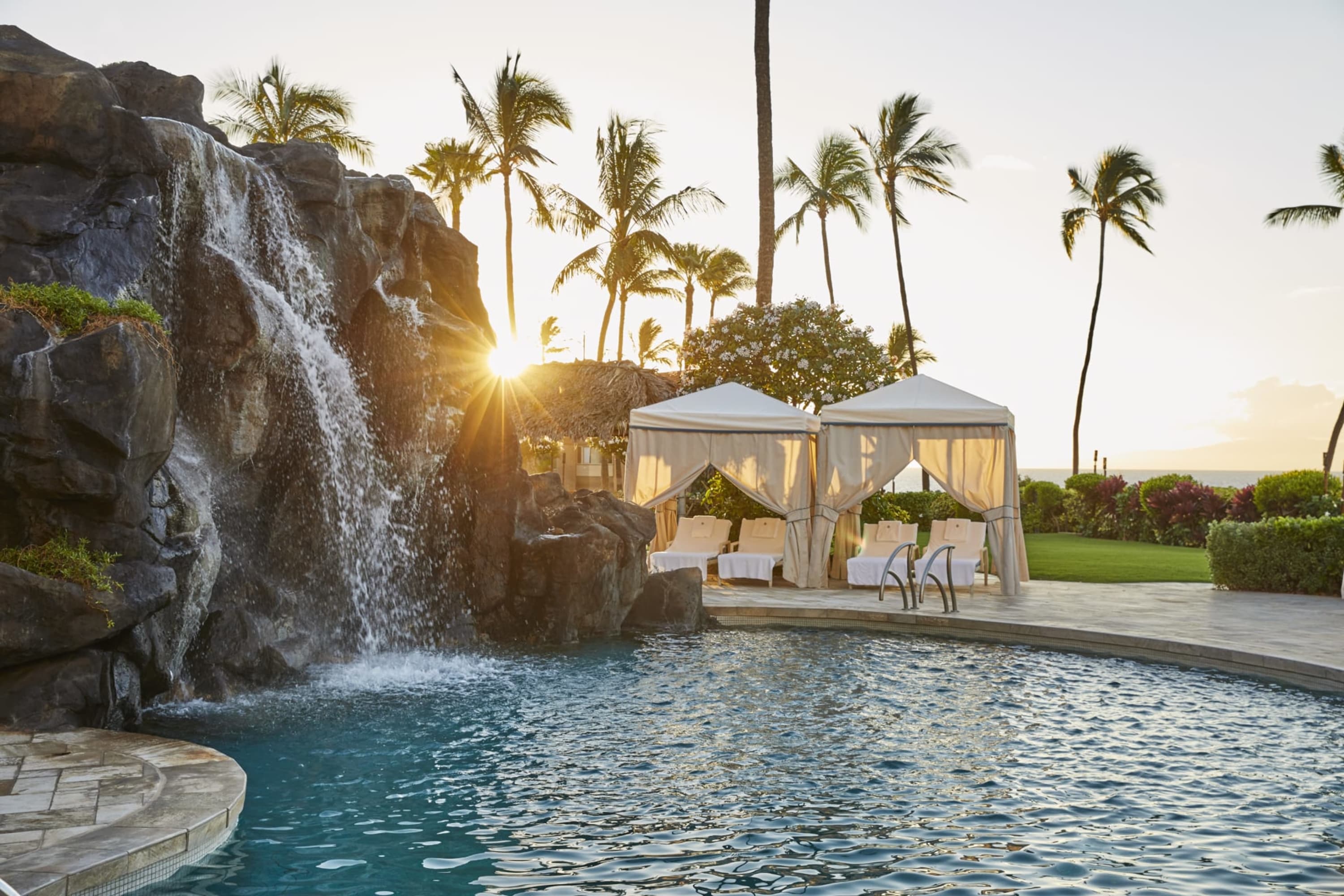
Image courtesy of Four Seasons Resort Maui at Wailea
At a minimum, we recommend spending at least five to seven days in Hawai‘i to get the most out of your stay. This gives you time to adjust and unwind after a long flight, in addition to actually enjoying the islands. If you’re interested in exploring each major island, we recommend at least a few days per island — you could easily spend a month across Hawai‘i and not see all the highlights.
Related guides: Family Itinerary for 1 week in Oahu and 7-Day Family-Friendly Vacation in Maui
Which Hawai‘ian islands are the least touristy?
Hawai‘i’s resort areas can be a little touristy, especially in the more developed areas of Oahu, Maui and, to a lesser extent, the Big Island. As you venture away from the popular areas, though, you’ll find authenticity on all the major islands.
What Hawai‘ian food should you look out for on your first visit?
Contemporary Hawai‘ian cuisine is a blend of Indigenous Hawai‘ian, Polynesian, Asian and American flavors, with an emphasis on fish, taro — a native root vegetable — and tropical fruits. Grilling and sustainable fishing and farming practices are both key aspects of Hawai‘ian culinary tradition.
Fora Advisor Winnie Harwell’s list of must-eats in Hawai‘i include spam musubi, plate lunches like garlic shrimp and loco moco — rich gravy over a fried egg and burger patty on a bed of white rice — haupia pie and macadamia nut pancakes.
Poke bowls are also famously tied to Hawai‘ian cuisine as an import from East Asia, as are malasadas, which originally hail from Portugal. The latter were brought over by immigrants and were met with wild success (there’s even a holiday dedicated to the pastries). Over the decades, Hawai‘ian malasadas have taken on a new life, with a variety of locally inspired and fusion options.
Related guide: Where to Eat Gluten-Free on The Big Island
When is the best time to visit the Hawai‘ian islands?
The Hawai‘ian islands are largely year-round destinations. Across the islands, the temperatures are comfortably warm. While rainfall is very common, it’s typically limited to around an hour per day. Winter — as much as Hawai‘i has a winter — and summer both see large crowds from the mainland United States and East Asia. Fall and spring see fewer crowds, more approachable rates and more availability.
A note from Fora Advisor Carlie Lee: Visit Hawai‘i between mid-December and mid-March for the best chance to spot humpback whales.
“If you're lucky, sometimes you can even hear them singing underwater while snorkeling or diving,” she said.
Which islands have the best hiking? Which are the most beautiful?
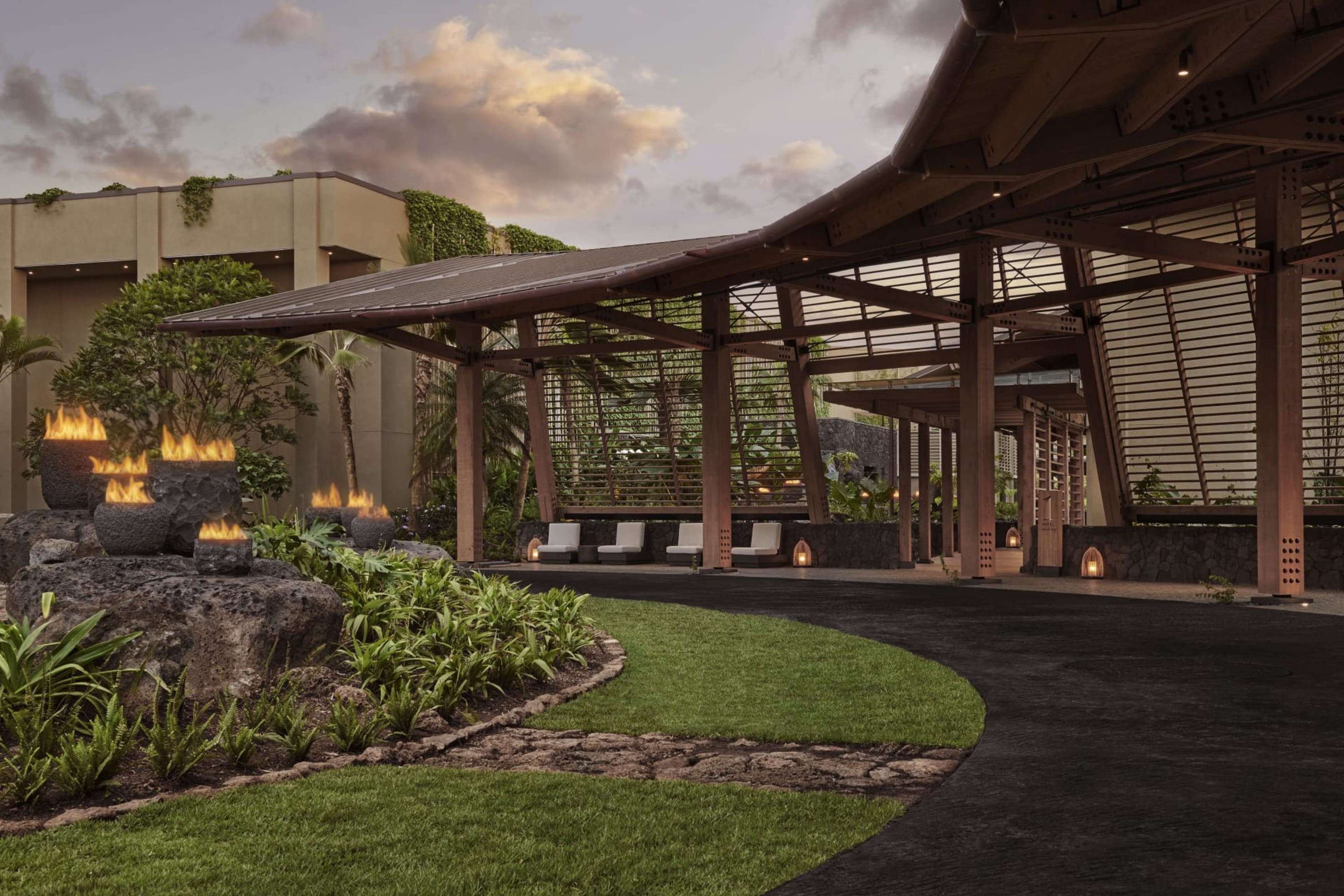
Image courtesy of 1 Hotel Hanalei Bay
All the Hawai‘ian islands have hiking trails through gorgeous landscapes. If you want off-the-beaten-path variety, you may prefer the Big Island or Kauai. The former pairs verdant jungles with volcanic parks, while the latter hosts some of the densest jungle in the United States as well as a unique desert environment. Each island can make a case for being the most beautiful.
Are any Hawai‘ian islands off limits?
Yes. The Hawai‘ian island of Niʻihau, the “Forbidden Island,” is generally off limits to the public, outside of the occasional tour. Niʻihau is privately owned and inhabited by native Hawai‘ian residents who maintain a traditional, secluded lifestyle. Additionally, Kahoʻolawe is uninhabited and off limits due to its history as a former US military base. It’s now a protected reserve, and visits are restricted to cultural and environmental restoration work.
More tropical travel inspiration
Hawai‘i is exceptional, but there are many more amazing tropical destinations around the world:
